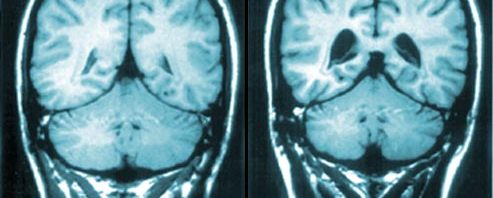By Cullen Knowles
When people hear the word schizophrenia, Hollywood movies about deranged serial killers and lunatics often come to mind. A recent example is the movie Split, a horror/thriller about a kidnapper with 24 different personalities contained within his mind, driven to do horrible things because of his mental illness (1). There are many other examples like Split in popular culture, in which an individual with schizophrenia is portrayed as being dangerous to other people, and these examples illustrate the stigma surrounding people with schizophrenia and other mental illnesses in our society.
Unfortunately, this perception of people suffering from Schizophrenia is really founded on a series of misunderstandings about the disorder, rather than scientific evidence. Most people think of schizophrenia as a disease in which a person’s mind contains multiple personalities, some benign and others malicious. This misperception likely arises from the word schizophrenia itself, which directly translates into ‘split mind.’ In reality, people who suffer from this disease do not have ‘multiple personalities’ inside their minds, but have a variety of symptoms categorized as either positive or negative.
Positive symptoms include hallucinations (primarily auditory hallucinations), disorganized speech or thought patterns, and inappropriate emotional responses, such as laughing during a funeral or crying during a comedy movie (2). Negative symptoms are characterized by the absence of emotion, or a lack of appropriate emotion, such as toneless voices, expressionless faces, and rigid bodies (2). Individuals who suffer from schizophrenia may either exhibit positive or negative symptoms, or a mixture of both, but at least three of these symptoms must be present in order to be diagnosed with the disorder. No ‘alternative personalities’ are present within the mind of someone who suffers from schizophrenia.
The physiological causes of these symptoms, and schizophrenia in general, are largely unknown, especially to the general public. Brain abnormalities, such as the smaller size of several regions of the brain, have been implicated with the onset of the disorder, and environmental factors such as stress are thought to be risk factors as well. The hippocampus of the brain, which is responsible for the coordination of memory formation, is one of the key areas affected by schizophrenia. Decreased neuronal connectivity and plasticity in the hippocampus is associated with schizophrenia, and this could explain the racing thoughts and memory problems that occur in patients with the disease (3). The disruption of signaling pathways responsible for the growth and differentiation of neurons in human embryos is also thought to play a role in the development of schizophrenia.
Understanding the real symptoms of schizophrenia, and understanding some of the science behind how the disorder develops, is crucial to understanding why people with schizophrenia behave the way they do. Without an understanding of what schizophrenia is, it’s impossible to overcome society’s misperceptions of schizophrenia and treat people suffering from the disorder with compassion.
Sources:
1. https://en.wikipedia.org/wiki/Split_(2016_American_film)
2. http://schizophrenia.com/diag.php#
3.https://moodle.cord.edu/pluginfile.php/625277/mod_resource/content/2/2013%20wnt%20GSK%20and%20schizophrenia.pdf
Image: https://img.webmd.com/dtmcms/live/webmd/consumer_assets/site_images/articles/health_tools/schizophrenia_overview_slideshow/webmd_rf_photo_of_mri_brain_scans.jp
The Stigma of Schizophrenia: How Society Misrepresents Mental Illness
